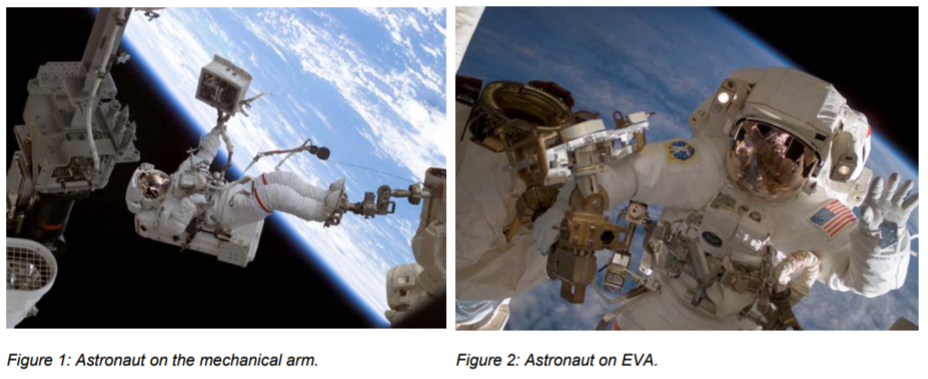Components of a Space Suit
Background
This problem is part of a series of problems that apply algebraic principles in NASA’s human
spaceflight. https://www.nasa.gov/pdf/593844main_ALG_ST_SuitYourself_final.pdf
The Space Shuttle Mission Control Center (MCC) and the International Space Station (ISS) Control
Center use some of the most sophisticated technology and communication equipment in the world.
Teams of highly qualified engineers, scientists, doctors, and technicians, known as flight controllers,
monitor the systems and activities aboard the space shuttle and the ISS. They work together as a
powerful team, spending many hours performing critical simulations as they prepare to support each
mission and crew during normal operations and any unexpected events.
The Extra-Vehicular Activities (EVA) officer monitors all aspects of the spacewalks performed from the
space shuttle and the ISS. The EVA officer monitors the technical operation of the spacesuits and the
activities to be carried out prior to a spacewalk. The EVA officer also monitors the space walk from the
MCC and evaluates the spacewalk afterward. The spacesuit is officially known as an Extra-vehicular
Mobility Unit (EMU). Anytime a crew member has to step outside of a pressurized vehicle, such as the
space shuttle or ISS, to work in the vacuum of space, an EMU must be worn.

Suppose an astronaut were to leave a pressurized vehicle without wearing an EMU. Because there is
no oxygen, the astronaut would lose consciousness within 15 seconds. While in orbit the sun rises and
sets every 90 minutes, which means the astronaut experiences sunlight for 45 minutes with
temperatures possibly reaching 120o C (248o
F) and darkness for 45 minutes with temperatures
possibly dropping to -100o C (-148o F). A typical EVA may be up to 7 hours, which means the astronaut
would change from hot to cold or cold to hot, about 9 times during the EVA. These extreme
temperature changes and the lack of air pressure would cause the body fluids to boil or freeze. The
astronaut would also be exposed to radiation and cosmic rays, and could even be hit by space debris,
such as micrometeoroids, that move at high rates of speed.
The key features of the EMU that keep the astronauts alive and comfortable are habitable pressure,
breathable air, heating and cooling control, and protection from the harsh space environment. It also
provides the astronaut the ability to move around with a range of motion for arms and legs, good
visibility, and communication with the crew and with the MCC. The EMU is its own controlled
environment in which a crew member can perform scheduled activities and planned spacewalks for up
to seven hours.
What are some interesting things you learned from the article?
Space Walk Video Part 1
Space Walk Video Part 2
What was one interesting thing you noticed in the videos?
Create a space suit
On the worksheet provided, design your own space suit. Make sure to review the different components listed on the back of the sheet.
Explore a Real Space Suit
Reflect
Do you think your space suit design is practical for a space walk? If yes, explain how. If no, what would you add or change to make it better?